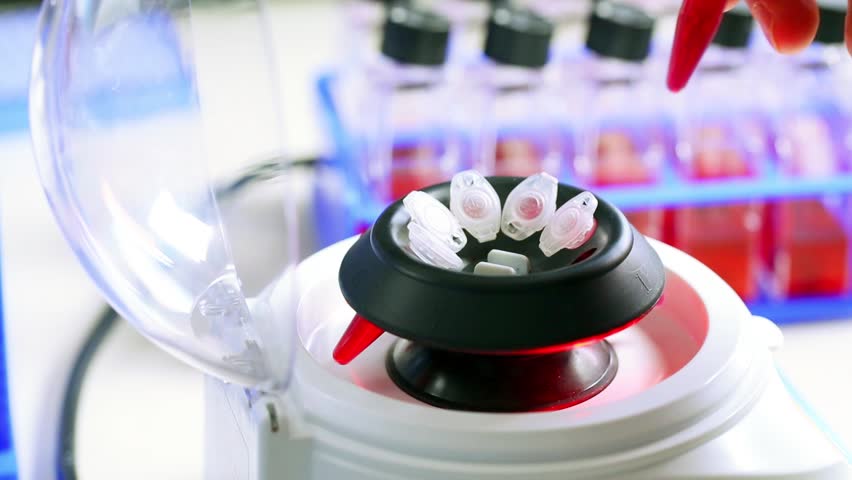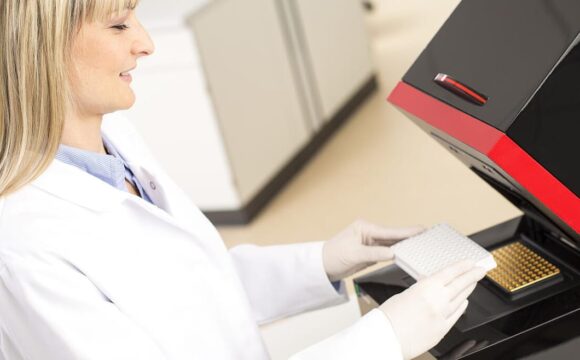A centrifuge is a machine that separates particles according to their size, shape, density and viscosity of the medium, by subjecting them to artificially induced gravitational fields. This can be used as a preparative approach to separate complex mixtures present in samples or analytically, to determine the mass, shape or density of particles. Materials with higher particle density will sediment towards the axis of centrifugation (down the tube), while materials with a lower particle density will sediment away from the axis of centrifugation. Cells, subcellular components, virus particles and precipitated forms of proteins and nucleic acids are commonly separated by this method.
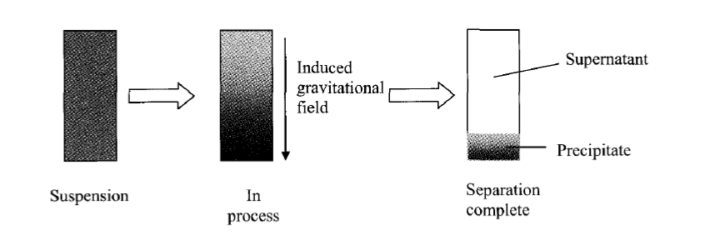
The centrifuge mainly works on the principle of sedimentation, where the acceleration at centripetal force causes denser substances to separate out along the radial direction at the bottom of the tube. The word ‘centrifugal force’ is derived from two Latin words, centrum which means “center” and fugere, which means “to flee”. It is basically the apparent force that draws a rotating body away from the center of rotation which is caused by the inertia of the body as the body’s path is continually redirected. The acceleration achieved by centrifugation is expressed as a multiple of the earth’s gravitational force (g). Based on the acceleration values they can reach, centrifuges are categorized into bench top (upto 15000 g), high speed refrigerated centrifuges (50000 g) and ultracentrifuges (500000 g). As ultracentrifuges can operate under cold conditions and in the vacuum, they are ideal for separating macromolecules like proteins, nucleic acids and carbohydrates. The radial force produced by the spinning rotor can also be expressed relative to g, as Relative centrifugal force (RCF) or g-force.

A centrifuge has three basic parts, namely rotor, drive shaft and motor. Rotors can be mounted on the drive shaft, which connects it to the motor. The motor provides the power to turn the rotor. Usually, a secure cabinet surrounds and supports these parts. The sample is placed in a reinforced plastic tube which is then held in a rotor which rotates around a spindle. Rotors are usually made from robust material, like aluminium alloy or stainless steel. For the minimizing of vibration and strain on the shaft and bearings, a loaded rotor should be well balanced, i.e., its total mass should be distributed about the axis of rotation such that the resultant of all elemental forces is zero.
There are mainly two types of rotors available:
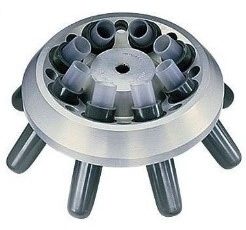
Fixed-angle rotors: The sample tubes are placed in a machined hole in the metal rotor which is at a fixed angle (generally 45⁰), relative to the vertical axis of rotation. This angle remains constant during the centrifugation process and the pellet is obtained against the side-wall of the tube.
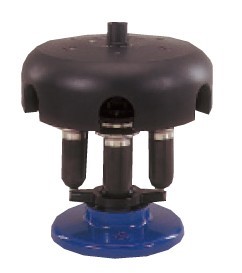
Swinging-bucket rotor: The sample tubes are placed in a holder which is suspended from the rotor. When the centripetal force is applied, the holder swings out to become horizontal with the horizontal axis of the rotor and the pellet is obtained at the bottom of the tube.
As the pellet is obtained at the bottom, swinging-bucket rotors are preferred over fixed-angle rotors. However, the notable features of fixed-angle rotors like simple and efficient tube spacing, ability to house a greater number of tubes, rigid design of the material and the ability to withstand higher gravitational forces, often make them an ideal choice.
One can also select from different types of centrifugation like density gradient centrifugation, differential centrifugation, rate zonal centrifugation and isopycnic centrifugation based on the type of application involved. Regardless of the application and rotor design, centrifugation plays a significant role in separating of micro- and macro-molecules in solutions and form an indispensable part of any laboratory.
References:
- https://www.britannica.com/technology/centrifuge
- https://en.wikipedia.org/wiki/Centrifuge
- https://www.laboratory-equipment.com/blog/all-laboratory-equipment-blogs/centrifuge-rotor-types-swinging-bucket-vs-fixed-angle/
- https://www.beckman.com/resources/fundamentals/principles-of-centrifugation
- https://www.jove.com/science-education/10365/working-with-centrifuges
- https://nios.ac.in/media/documents/dmlt/Biochemistry/Lesson-28.pdf
Image sources:
- Unit Operations of Chemical Engineering by McCabe and Smith
- Textbook of Physical Biochemistry by David Sheenan
- https://megadepot.com/resource/the-use-and-maintenance-of-lab-centrifuges
- https://www.nuaire.com/p65st-swinging-bucket-rotor-3-x-5ml-tubes-hk-9022390m



